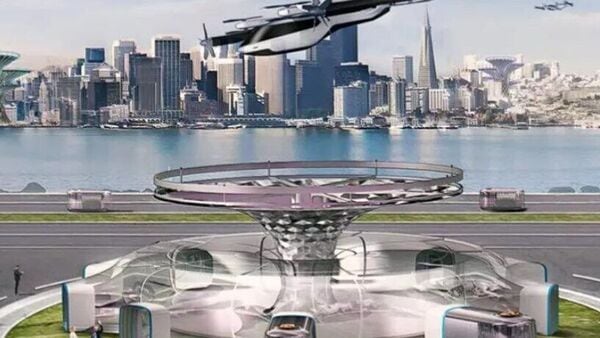
Flying cars have been a long-standing dream of mankind in a future where people are able to get in and fly out just as easily as one can drive out today. For all the advancements made in mass and personal transportation technologies in recent years though, personal or community-based flying vehicles remain confined to a far-off distance in time. But it isn't really a question about 'if', rather ‘when.’
The Federal Aviation Administration (FAA) under US Department of Transportation recently presented a paper which seeks to give an in-depth look into the scope and scale of Urban Air Mobility (UAM) system and options, along with supporting infrastructure push that would be required in the times to come. Underlining the need for a strong and continuing collaboration between government and industry stakeholders in the country, the paper also predicts how diversifying flying options could revolutionise not just personal mobility options but recast a wide array of existing transport modules - cargo, for instance, while bringing urban pockets and rural expanses closer still.
The FAA paper clearly spells that ‘it is a target description of the evolution of integration from the near-term Innovate 28 environment to a future of high-density urban operations.’ As such, it makes a very clear note of the development in new aircraft designs that could potentially allow for Vertical Takeoff and Landing (VTOL) which are often popularly referred to as flying cars.
But flying in random patterns in the absence of physical air routes would only lead to the inevitable chaos, or worse. As such, the paper foresees dedicated corridors monitored and even potentially governed by Cooperative Operating Practices or COP. “COPs are characterised as industry-defined, FAA-approved practices that address how operators cooperatively manage their operations within the cooperative UAM environment, including conflict management, equity of airspace usage, and DCB," the paper highlights. In the initial phase, urban air mobility options are likely to make use of existing regulatory framework and the dedicated corridors would come up as expansion occurs.

The paper highlights that while a vertiport is a piece of land or structure to be used by VTOLs for landing and takeoffs, vertistop would be a ‘minimally developed vertiport which is specifically meant for boarding and discharging passengers and cargo.’ These would eventually have to be connected with surface transportation options, much like how airports of today are.
The overall key to ushering in cutting-edge urban air mobility options, notes the paper, would be to monitor and assist development of VTOLs while also prepping land infrastructure - hard and soft (processes and procedures), and updating the regulatory framework to allow for next-generation of transport options.
Disclaimer: This Article is auto-generated from the HT Auto news service